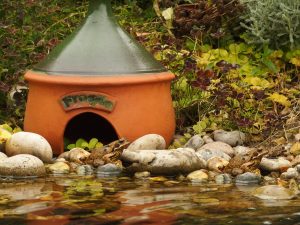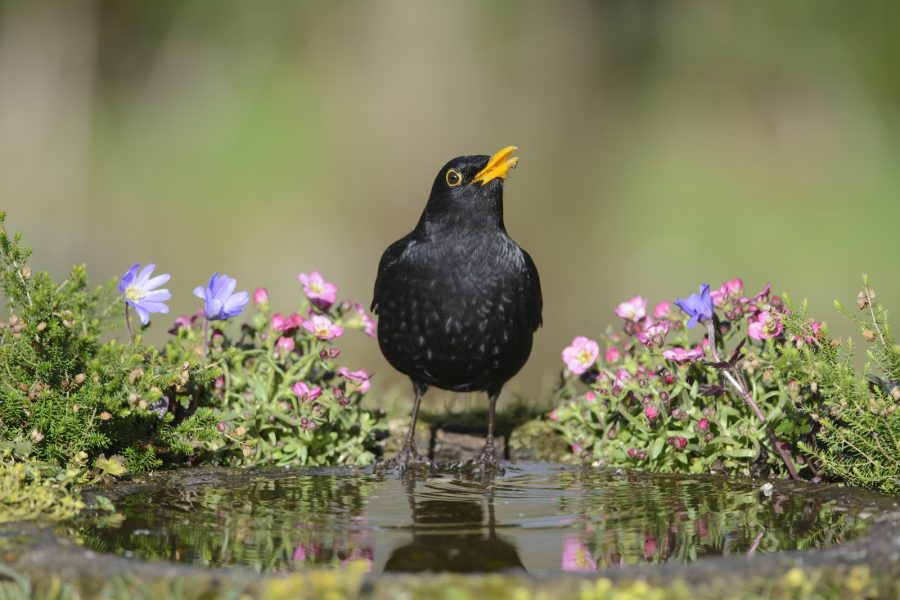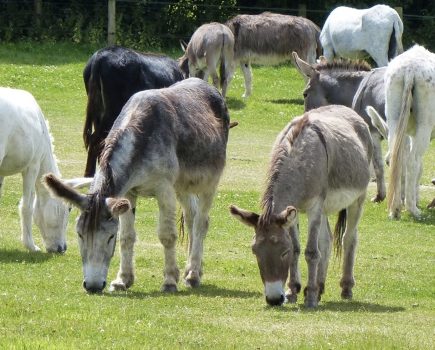Save local wildlife with these easy-to-follow expert tips from the RSPB on supporting wildlife while away on your summer travels.
It’s summer – time for a break! With students of all ages now on their summer holidays, now presents the perfect opportunity to de-stress and spend some time in new surroundings.
Though time away can be a much needed reset, it can easily leave your garden, and all the life in it, feeling a little neglected. However, that doesn’t have to be the case.
The RSPB Shop has consulted its team of conservationists to provide this easy guide to keeping your garden (and the wildlife that calls it home) happy whilst you’re away with 16 actionable tips for helping nature stay safe this summer.
Provide for the pollinators
It’s uber-important that, despite your absence, any nectar and pollen-producing plants in your garden are kept in tip-top condition, as stressed plants won’t produce much pollen.
- Mulch up: Apply a layer of organic mulch (such as wood chips or compost) around the base of your plants. This will help to conserve moisture, regulate soil temperature, increase growth, and suppress weed growth.
- Get pruning: Regularly deadheading faded or spent flowers will encourage continuous blooming and stimulate the production of fresh flowers, too.
- Mix things up: A diverse selection of flowering plants is also essential for maintaining a consistent food source for pollinators.
- Opt for hardy varieties: To ensure a lush garden with minimal upkeep, opt for drought-resistant plants such as buddleia, lavender, and foxgloves.
- Support all pollinators: It’s also a great idea to include features in your garden that attract and support pollinators — especially our more overlooked species. For example, the Dewdrop Bee Biome is an ideal shelter for solitary bees. These lonely buzzers are classic introverts, but while they don’t form colonies or live in hives, they’re one of the most efficient pollinators around, so they’re well worth looking after!
- Provide water: Insects need to stay hydrated too, so make sure you’ve got a few shallow water zones. Use either an insect-friendly drinker or try filling a large, shallow dish with pebbles and water to make a simple insect water feeder where passersby can safely land and take a drink.
 Create wildlife refuge areas
Create wildlife refuge areas
Great British weather is known for its unpredictability. Though we are experiencing wetter weather now, it’s not outside the realm of possibility that a scorching sunny spell could creep in whilst we’re away holidaying. As humans well know, one of the best ways to deal with the heat is simply to retreat indoors, and so it follows that one of the kindest things you can do to your garden’s visitors in your absence is to prepare a shady place for them to chill out, just in case.
- Bird boxes: For your feathered friends, try placing a bird box in a quiet, shady corner of your garden. These cosy shelters offer birds a safe and cool spot to rest, breed, and seek refuge from the scorching sun.
- Hedgehog homes: On the ground below, consider setting up a home for any prickly pals that may decide to visit. The RSPB classic hedgehog house kit is a cinch to build and made from FSC®-certified timber, making it an ideal (and eco-conscious) choice.
- Install a pond: A well-built pond can provide a cool, natural oasis, and over time will transform into a thriving habitat for all sorts of fascinating creatures.
- Add secondary heat shelters: If you’ve already got a pond installed, think about placing some supplementary shelters there as well. The Froglio frog and toad shelter is built from frost-resistant ceramic and has a cut-away base, allowing any visiting creatures to enjoy the cool, damp earth below them. And all usefulness aside, it’s rather adorable knowing that your pond-dwelling pals have a cosy little home all of their own!
- Ensure easy access to water: Try to provide a variety of water sources in your garden to cater to different animals. Bird baths, shallow dishes, or even a simple saucer filled with water can be a lifesaver for birds, butterflies, and other thirsty critters. Just make sure to keep the water source clean and regularly topped up to ensure it remains fresh and inviting.
Be water-conscious
2022 was one of the UK’s driest years on record, and with hosepipe bans affecting large areas of the country (especially in the south), many gardens were left parched and lifeless. While droughts are still a relatively infrequent occurrence, they are becoming more common right across Europe.
Here are some water-saving preparations that will help your garden remain a refreshing oasis while conserving this precious resource:
- Embrace the power of rainwater: Capture the precious rainwater that graces your roof by installing a water butt. This simple addition allows you to collect and store rainwater, which can then be used to irrigate your plants during dry spells.
- Water smartly: When watering your garden prior to your departure, be strategic in your approach. Opt for the cooler hours of the day, such as early morning or late evening, to minimise water loss due to evaporation. If you are thinking of installing a watering system to keep your garden hydrated in your absence, instead of employing wasteful methods like overhead sprinklers, consider using a targeted irrigation system to deliver water directly to the plant roots.
- Use trees as the backbone of the garden. Trees give shade and keep the ground cooler so are great to include in your garden for long-term cooling benefits. (Don’t forget to deeply water trees in times of extreme drought, though.)
- Create shaded areas: Try to create patches in your garden that provide shade for most of the day. These areas will hold onto moisture more readily, giving damp-loving animals a place to escape to during dry spells.
- Group plants with similar water needs: When planning your garden layout, group plants together based on their water requirements. This way, you can water them more efficiently by targeting specific areas and avoiding overwatering or underwatering certain plants.
Looking for more ways to transform your garden into a wildlife paradise? Explore the RSPB’s video guide to creating a wildlife-friendly garden and enjoy making a safe home for nature.








